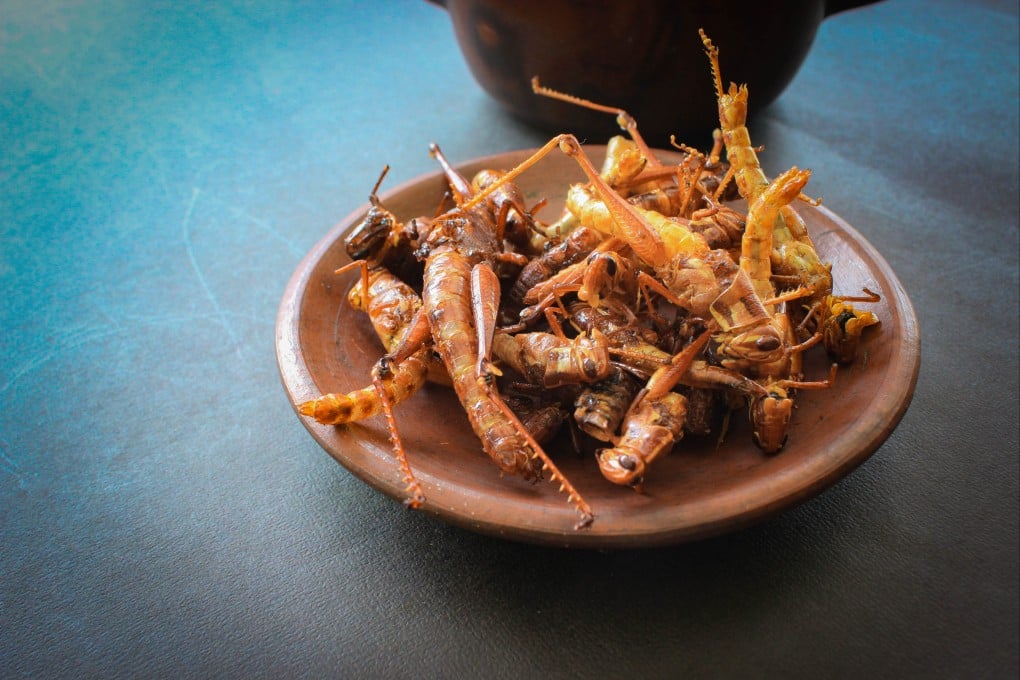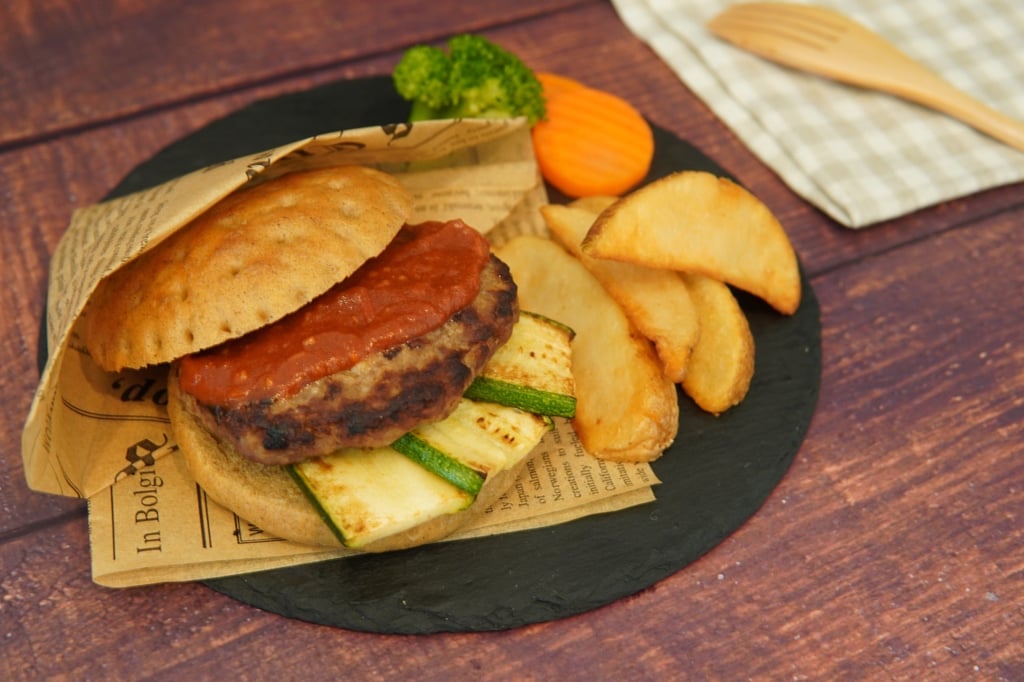In-flight meals made partly from insects a Japanese airline’s contribution to promoting food sustainability
- Two in-flight meals introduced by budget airline Zipair contain ground-up crickets. To minimise food waste, the burger and pasta dishes are cooked to order
- The nutritious insects are a more sustainable food source than beef, pork or chicken, and the move is a response to UN’s forecast of animal-based food shortages

Japanese budget airline Zipair is taking its commitment to sustainable development goals to new heights by introducing in-flight meals made with insects.
The airline, a subsidiary of national carrier Japan Airlines that is based at Tokyo’s Narita International Airport, started taking reservations in July for two in-flight meals that are made partly of ground-up crickets, widely regarded as a rich source of protein and other nutrients.
The airline is serving a chilli burger with tomato and a pasta dish, both of which include crushed cricket and cost 1,500 yen (US$11.30).
Zipair, which commenced passenger operations in October 2020 and flies from Narita to Singapore; Seoul, South Korea; Bangkok, Thailand; and Honolulu and Los Angeles in the United States, is collaborating with food technology company Gryllus to serve up the unusual meals – and officials say there have been no complaints so far.

“Although we are still reviewing customer feedback, we have received more than 60 purchase orders for the two dishes since they were introduced on July 1,” said Mark Matsumoto, a spokesman for the airline.